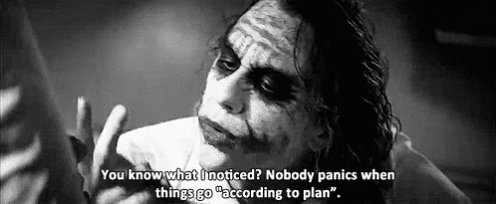Debtonation - 27 Dec 23
Poilievre’s latest instalment in video strategy targets debt
Could spark communications competition - National Post -28 Dec 2023 - Stuart Thomson
If Conservative Leader Pierre Poilievre’s documentary about housing in Canada released earlier this month seemed like an eccentric attempt at political communications, the party has now upped the ante with a multi-part series on the prospect of a debt crisis in Canada.
The
first of five episodes was released on Wednesday and describes Canada’s cumulative debt, held by governments, businesses and Canadian citizens, as a “time bomb ticking away” under the homes of Canadians. All that debt, the video argues, could eventually bring the country’s economy to its knees if interest rates rise even two or three points from today’s levels.
Like the previous documentary, Poilievre provides the narration and it includes arguments and rhetorical flourishes he has been making in speeches since becoming Conservative leader last year.
Poilievre’s previous documentary released earlier in the month, about Canada’s “housing hell,” has racked up nearly half a million views on Youtube in about three weeks and 4.5 million views on X, formerly known as Twitter.
It could be the start of a new era in political communications, where politicians no longer assume they have to get their message across in 30-second bursts on TV or in short social media videos.
Instead, with a little bit of attention paid to production values, Poilievre has found a way to make lengthy and wonky arguments against Prime Minister Justin Trudeau.
“I think the bar has been raised here and every time one of these videos comes out, it will reiterate that this is the new standard that political parties have to keep up with,” said Cole Hogan, a conservative digital strategist and principal at Earnscliffe Strategies.
The video also comes at a time when Poilievre is riding high in the polls and the Liberals are struggling to gain a foothold on the issues that are vexing Canadians. A new Nanos poll released on Wednesday found that 34 per cent of Canadians say Poilievre is their preferred choice for prime minister, which is a 10-year high for Conservative leaders and 13 points higher than Trudeau. The Conservative party continues to poll at over 40 per cent, which would likely be enough to deliver a majority government if an election were held today.
The top issues according to the Nanos poll are inflation, jobs and the economy, and the cost of housing.
Hogan said Poilievre’s command of these issues, and his creative way of showing it off, should be making the Liberals and NDP anxious about the next election.
“The political standard is now that you need to be putting out in-depth policy videos, and glossy, shiny ones that give Canadians a lot to chew on,” said Hogan.
“And I think the expectation for the Liberals and the New Democrats now is that they keep up. If Poilievre keeps doing circles around you in terms of putting out substantive content then your own base might even start not taking you seriously.”
The video is a grim walk through world economic history, using quotations from Winston Churchill, the stoic philosopher Seneca and the Greek philosopher Pythagoras.
Poilievre’s narration warns about the high human cost of an economic crisis, displaying research conducted at the University of Calgary about the increase in suicides that comes along with job losses. Poilievre also forecasts that Canada’s expanding medical assistance in dying program will mean people experiencing only a temporary economic setback could be at risk. The government faces a decision in March about whether the program should be allowed to expand to people whose only reason for seeking it is a mental disorder.
The video is not conventional holiday viewing, to say the least. Hogan said it was likely a deliberate choice by the Conservative party to post it when the rest of the news agenda is quiet and, in the wake of Christmas and Boxing Day shopping, when Canadians could be looking at big credit card bills.
“We are in the holiday deadzone here, where people aren’t paying much attention. But because there’s not a lot of new content or news during this period a lot of attention will be dedicated towards (this video),” said Hogan. “So now we have some political content in the middle of the holidays and people with a lot of idle time on their hands. So this might be an advantageous time to drop the video.”
The previous “housing hell” documentary was released on a Saturday morning, another unorthodox time for publishing political communications, but still managed to rack up millions of viewers and engagements. And for years as a member of Parliament, Poilievre held Sunday afternoon press conferences that allowed him to command the full attention of the journalists working on the weekend and, often, claim a prominent spot in the Monday morning newspaper pages.
That kind of thinking has been transferred to the production of web videos since the early days of Poilievre’s campaign for Conservative leader, sometimes with remarkable success. A video he filmed walking through a packed Pearson airport a year-anda-half ago, at the height of post-pandemic travel strife and fittingly titled “Pearson Airport sucks,” garnered a quarter-million viewers on Youtube. Another video of Poilievre verbally jousting with a journalist while eating an apple gained international headlines.
The other leaders have struggled to achieve online engagement approaching these heights. Perhaps the closest is NDP Leader Jagmeet Singh, who experimented with the video-based social media service Tiktok during the 2021 election campaign and built up a following of nearly a million users. Singh deactivated his Tiktok account this year in response to privacy and security concerns from Canada’s chief information officer.





